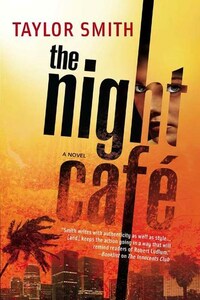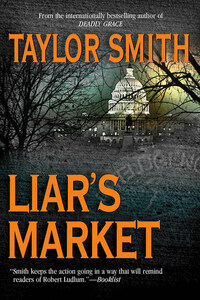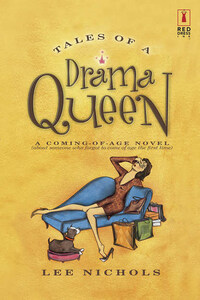PRAISE FOR THE NOVELS OF
TAYLOR SMITH
“Smith, who has been both a diplomat and an intelligence agent, convincingly conveys what life is like on the streets and sands of Iraq in her compelling new thriller.”
—Publishers Weekly on Slim to None
“Smith’s experience as an international diplomat and intelligence analyst lends credibility to this first-rate political thriller…exciting and intelligent.”
—Booklist on Deadly Grace
“The publisher compares Smith to John Grisham…Smith’s a better prose stylist.”
—Publishers Weekly on Random Acts
“Smith’s latest is a graceful, compellingly written thriller…[The] gloriously intricate plot is top-notch.”
—Publishers Weekly on The Innocents Club
“Sharp characterization and a tightly focused time frame…give this intrigue a spell-binding tone of immediacy.”
—Publishers Weekly on The Best of Enemies
Taylor Smith
The night Café
This one goes out with love and thanks to The Plot Queen, Linda McFadden—ally, muse and coconspirator. Neither time nor distance can squelch a great friendship.
It’s been a decade and a half (hard to believe) that I’ve been working with the wonderful people of MIRA Books, and I feel as lucky today as I did fifteen years ago when they offered to publish my first book. My deepest thanks to Miranda Stecyk, my editor, with whom it’s a joy to work—and to hang out, on those happy occasions where we find ourselves in the same city.
My family, near and far, is unfailingly supportive. Love and thanks especially to my amazing husband, Richard, and our beautiful, brilliant and all-grown-up daughters (how is that possible?), Anna and Kate.
I am thinking of frankly accepting my role as madman.
—Vincent van Gogh, in a letter to his brother,
Theo, March 24, 1889
Just because I am always bowed down under this difficulty of paying my landlord, I made up my mind to take it gaily. I swore at the said landlord, who after all isn’t a bad fellow, and told him that to revenge myself for paying him so much money for nothing, I would paint the whole of his rotten shanty so as to repay myself.
—Vincent van Gogh
Letter to his brother Theo
Arles, 8 September, 1888
Prologue
Chapter One
Chapter Two
Chapter Three
Chapter Four
Chapter Five
Chapter Six
Chapter Seven
Chapter Eight
Chapter Nine
Chapter Ten
Chapter Eleven
Chapter Twelve
Chapter Thirteen
Chapter Fourteen
Chapter Fifteen
Chapter Sixteen
Chapter Seventeen
Chapter Eighteen
Chapter Nineteen
Chapter Twenty
Chapter Twenty-One
Chapter Twenty-Two
Chapter Twenty-Three
Chapter Twenty-Four
Chapter Twenty-Five
Chapter Twenty-Six
Chapter Twenty-Seven
Chapter Twenty-Eight
Chapter Twenty-Nine
Chapter Thirty
Chapter Thirty-One
Chapter Thirty-Two
Los Angeles
January 1
“People remember pain. They’ve done studies. You want to make a point with a person and make it stick, hurt ’em. Works every time.”
Afterward, before she stopped talking altogether, volunteer museum guide Dorrie Schaeffer kept repeating over and over what one of the intruders had said. She was in shock, of course, what the shrinks call posttraumatic stress disorder. But there was disbelief in her quavering voice, too—incredulity at the monstrous callousness of the man.
It wasn’t that Dorrie was naive about the potential for human cruelty. You don’t get through seventy-six years without witnessing some real wickedness. But this brutality at the Arlen Hunter Museum came out of nowhere.
The sun had gone down after a showery New Year’s Day, and Santa Monica Boulevard twinkled under holiday lights still strung on buildings and over the roadway. There’d been long, snaking queues outside the museum since opening, patrons anxious for one last chance to see the Madness & the Masterpiece exhibit, the high point of the Arlen Hunter’s fall season.
When the trouble started, Dorrie should have been far away. The crowds had gone home, the doors were locked. For the next twelve hours, a skeleton security staff would have the treasure to themselves, enjoying the collected masterpieces for a few hours more before the group was split up and the borrowed art returned to its owners.
Dorrie was in the underground parking lot, hurrying to get home to Wuthering Heights on Masterpiece Theatre. But as she was unlocking her car door, she remembered the van Gogh print she’d bought for a niece who was coming by the next day. Her brother’s daughter never failed to remember her birthday or to include her in family holiday celebrations. Knowing how much Renata loved van Gogh, Dorrie had bought her a beautiful lithographic reproduction of The Night Café, signature piece of the Madness & the Masterpiece show. Except, like a nitwit, she’d left it in her locker.
Bemoaning her absentmindedness, she reentered the building, backtracking toward the staff room located off the south gallery. She was in the hall just outside that gallery when she heard a shout. She froze at the sight of two men near the end of the gallery, their backs to her. Bert Fernandez, an old night guard, was on his knees facing her, although the intruders had his full attention. A brutal kick from one of them suddenly sent him sprawling, blood spurting from his mouth.














